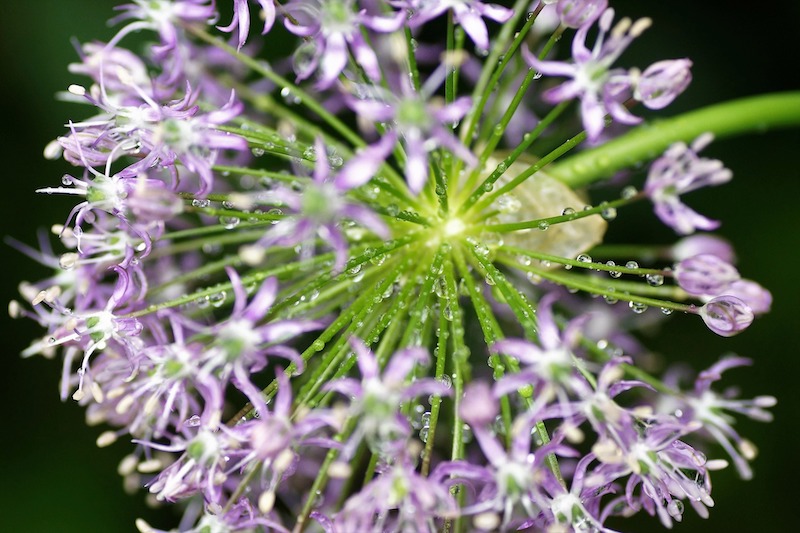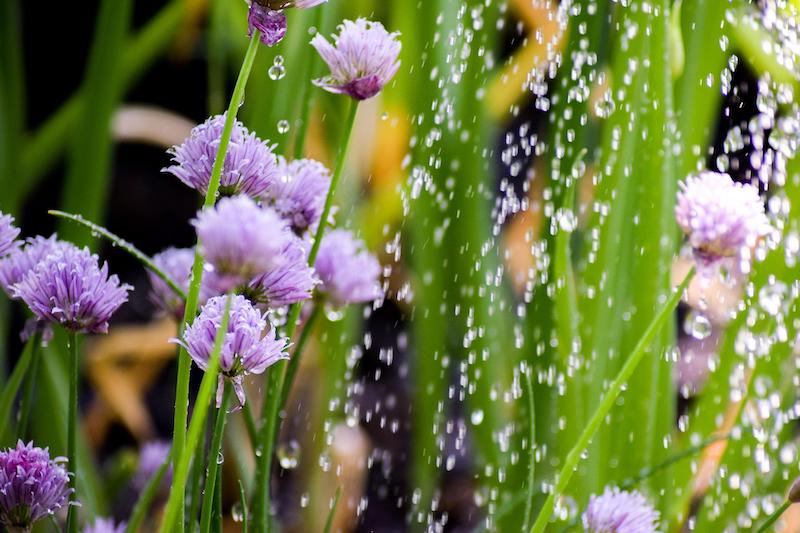Ornamental alliums are just about the perfect drought-resistant and low maintenance plant. After these perennial bulbs are well established, very little supplemental watering is needed. Overwatering is a common issue and leads to rotting of the bulb and death of the plant. The root systems of Alliums can grow deep in the ground and survive periods of heat and drought. The key is to start the plants out with proper watering. Long, infrequent watering's benefit plants more than many short watering sessions.

How To Tell If Alliums Need Watering
Ornamental alliums are masters of disguise when it comes to the common signs of underwatering. The leaves of most cultivars are thick and fleshy and hold moisture for a long time. During extreme drought conditions, the leaves will droop or look thinner than normal. This is a sign of late-stage underwatering. Plants could also have smaller blooms than normal in an exceptionally dry spring or early summer.
How Often To Water Alliums
Most fall-planted bulbs do not need extra watering at the time of planting. If the soil is particularly dry, drench the planting site to help hydrate the bulb and start root growth. Otherwise, no watering is needed over the winter. Supplemental watering may be needed if the allium is a later-blooming type. Avoid watering during weeks with rain. Late-blooming cultivars will only need watering once every week to 10 days if conditions are dry.

Alliums are drought resistant and don’t typically require the extra irrigation that other perennials need. Make sure to plant them near other plants that prefer less water. Alliums planted near thirsty plants that rely on extra irrigation will receive too much water and start to rot.
Container-grown Alliums need to be watched more closely for watering needs. Depending on how porous the pot is, watering during the height of the summer could be every 2-3 days. Plants potted in terracotta or other breathable materials will dry out much faster than those in plastic or resin pots.
Best Time To Water Alliums
Watering Alliums as early in the day as possible will allow any water that hits the foliage to evaporate. Wet foliage can encourage diseases like powdery mildew and rust to form. Edible and ornamental alliums are very susceptible to a disease called Allium Rust, which is a fungal disease that is spread by overhead watering. The water drops splash the fungal spores onto surrounding plants. Overwatering is very easy to do when the bulb is dormant. Supplemental watering during the late fall and winter is rarely needed.
How to Water Alliums
Step 1 - Assess if the soil has dried out
Feel the top 2-3 inches of soil to see if it is dry or still wet. If it has dried out, proceed to step 2.
Step 2 - Apply approximately ½ inch of water to the base
Keep water off foliage by using soaker hoses or drip irrigation. Only do this once a week to make sure that the soil is wet far into the soil to encourage deeper root formation.
Step 3 - Water alliums in pots more often
Make sure to fully saturate the container so that water is running out of the bottom drainage holes.
Allium Watering Tips
- Be careful to not overwater in the summer
- Winter watering is not usually needed
- Keeping water off the foliage helps to prevent and keep disease from spreading
- Longer watering sessions less often make for better root systems
 |
Author Robbin Small - Published 7-19-2022 |
